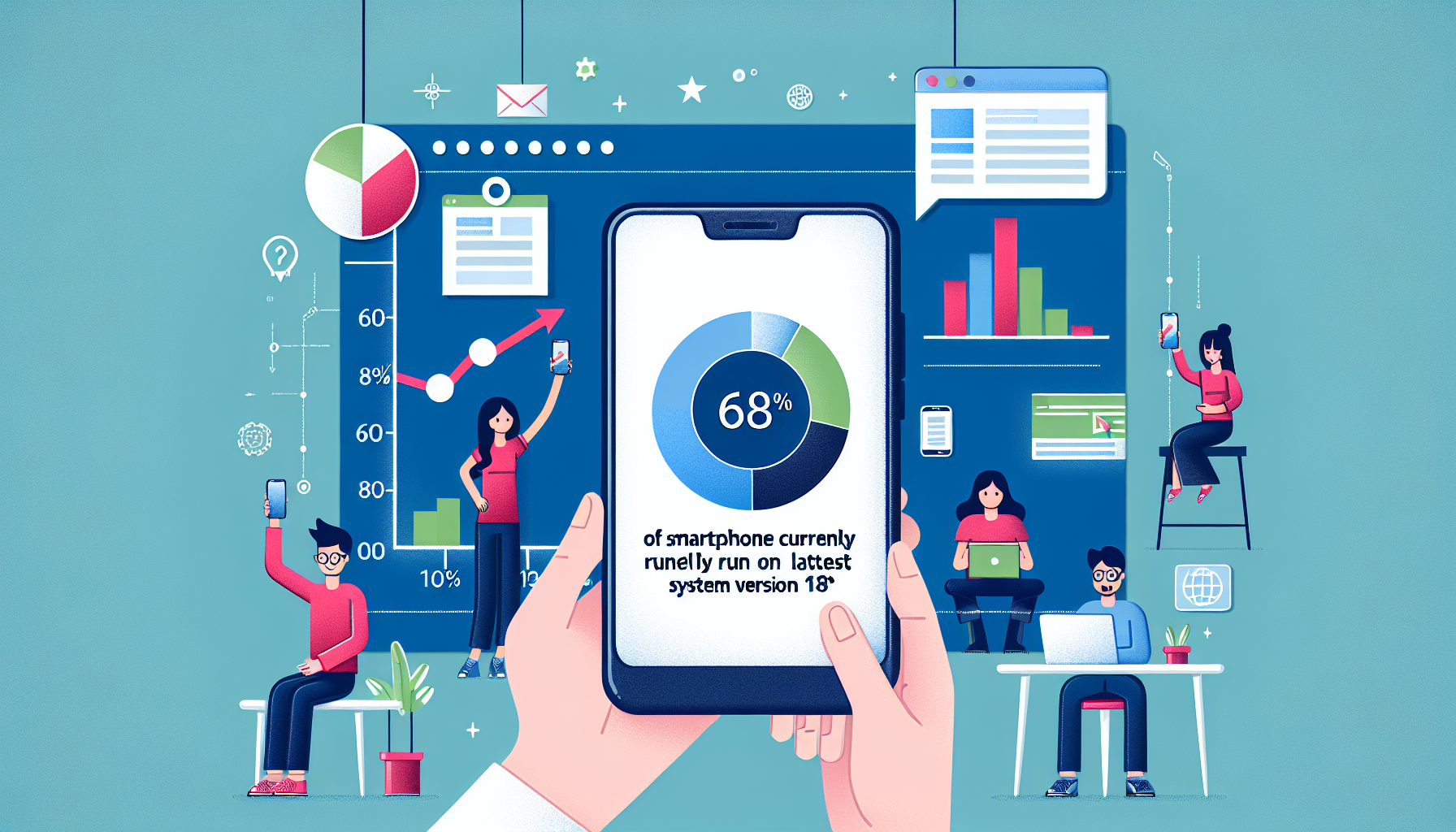
iOS 18 Adoption Rates: Insights into Apple’s Newest OS
Apple has recently shared statistics regarding the adoption rates of iOS 18, showing a gentle rise in comparison to its predecessor, iOS 17. Even though the figures depict gradual growth, they also underscore wider patterns in user habits and the uptake of Apple’s modern technologies. Let’s take a closer look and analyze what these statistics signify for Apple users and the technology sphere overall.
iOS 18 Adoption: A Gradual Increase
Adoption Among All iPhones
As of January 21, iOS 18 is now present on 68% of all iPhones. This marks a gentle 2% rise from the 66% adoption rate of iOS 17 during the same timeframe last year. Although this increase might appear minimal, it represents a consistent trend of users transitioning to the latest software.
Adoption Within Recent iPhone Models
For iPhones launched in the past four years, the adoption rate remains steady at 76%, consistent with iOS 17 figures from January 2024. This stability implies that newer devices are more inclined to operate on the most current operating system, likely owing to improved compatibility and performance enhancements.
iPadOS 18: A Comparable Trend
Adoption Across All iPads
The adoption rate for iPadOS 18 reflects that of its predecessor, iPadOS 17, with 53% of all iPads utilizing the latest software. This stagnation may suggest that iPad users are less motivated to upgrade their operating system than iPhone users.
Adoption Among Recent iPad Models
For iPads introduced within the last four years, the adoption rate is at 63%, a slight rise from the 61% noted for iPadOS 17 last year. This indicates a marginally increased willingness among new iPad owners to accept the latest software.
The Impact of Apple Intelligence on Adoption Trends
A particularly fascinating element of iOS 18 is its incorporation of Apple Intelligence, the firm’s collection of generative AI functionalities. While Apple has not revealed how many users have enrolled in these features, it is evident that the company is striving for wider acceptance. In the latest iOS 18.3 beta, Apple Intelligence is automatically enabled during the onboarding process, a departure from the earlier opt-in model. Although users can still choose to opt out, this requires navigating to the settings.
This strategic shift may be a response to the lukewarm reception of Apple Intelligence features in prior versions. By defaulting these functions, Apple likely aims to familiarize more users with its AI features and promote extensive utilization.
Implications for Apple Users
The slow growth in adoption rates for iOS 18 and iPadOS 18 suggests that Apple users tend to be cautious about updating their software. This hesitance could stem from worries regarding compatibility, performance, or simply a lack of enticing new features. Nonetheless, the emphasis on adopting Apple Intelligence indicates that Apple is heavily investing in AI as a distinctive advantage for its ecosystem.
For users, this implies that upcoming updates may increasingly prioritize AI-infused features, possibly making them a central component of the Apple experience. Whether this will lead to higher adoption rates in the future remains to be observed.
Conclusion
Although the adoption rates for iOS 18 and iPadOS 18 reflect only modest growth, they offer significant insights into user behavior and Apple’s strategic focus. The stable adoption rates among newer devices and the drive for Apple Intelligence integration illustrate the company’s commitment to remaining at the leading edge of technology. As Apple continues to enhance its software and roll out new features, it will be intriguing to see how these trends develop over the coming years.
Frequently Asked Questions (FAQs)
1. What is the latest adoption rate of iOS 18?
As of January 21, iOS 18 has been set up on 68% of all iPhones and 76% of those launched over the past four years.
2. How does iOS 18 adoption rate compare to iOS 17?
The adoption of iOS 18 is slightly higher, showing a 2% increase across all iPhones in comparison to iOS 17 during the same timeframe last year. However, the rate among newer iPhone models stays consistent at 76%.
3. What is the adoption rate for iPadOS 18?
iPadOS 18 is present on 53% of all iPads and 63% of iPads released in the past four years, revealing minimal change versus iPadOS 17.
4. What is Apple Intelligence, and what role does it play in iOS 18?
Apple Intelligence refers to Apple’s suite of generative AI functionalities embedded within iOS 18. In the latest iOS 18.3 beta, these features are automatically activated during onboarding, indicating Apple’s initiative for wider acceptance.
5. Why are the adoption rates for iOS 18 and iPadOS 18 considered relatively low?
Users may be hesitant to upgrade due to worries about compatibility, performance concerns, or a lack of compelling new features. Additionally, some might choose to wait until more stable versions of the software are available.
6. How can I opt out of Apple Intelligence features in iOS 18?
While Apple Intelligence is activated by default in the latest iOS 18.3 beta, users can opt out by going to the settings menu and turning off the features manually.
7. What implications does this have for future Apple updates?
The focus on AI-driven features such as Apple Intelligence indicates that future updates may prioritize these technologies, possibly making them a more significant aspect of the Apple ecosystem. This could have an impact on adoption trends and user behavior in the long run.